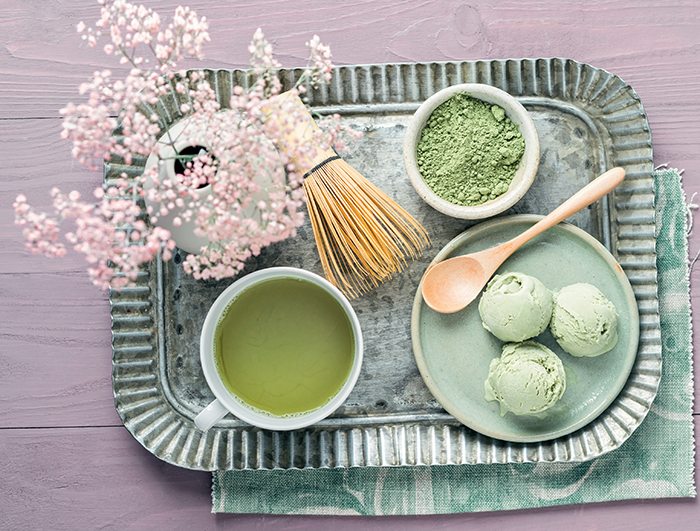When you order traditional green tea, parts of the leaves are infused in hot water, then the leaves are discarded. With matcha, you’re drinking the actual leaves, finely powdered and made into a solution. Matcha, which should always be made with hot but not boiling water, has two styles: usucha (thin) and koicha (thick).
Usucha is made with about half a teaspoon of matcha and approximately 75ml of hot water per serving, which can be whisked to produce froth. It is lighter and slightly more bitter. For koicha, double the powder and halve the water: about one teaspoon of matcha and approximately 40ml of hot water per serving. Matcha has a strong taste: grass or spinach are words that come to mind, and Western drinkers often sweeten it. Note: don’t do that at a Japanese tea ceremony.
HEALTH BENEFITS
Matcha is most prized for being rich in polyphenol compounds called catechins, a type of antioxidant. Matcha is made from ground whole tea-leaves so it’s a more potent source of antioxidants than standard green tea.
Studies suggest these might confer health benefits, but the evidence is inconclusive. The US National Cancer Institute hedges its bets after more than 50 studies of tea consumption and cancer risk since 2006. “The results of these studies have often been inconsistent, but some have linked tea consumption to reduced risks of cancers of the colon, breast, ovary, prostate and lung.” It states that tea consumption has also been linked to better blood sugar regulation, blood pressure reduction and anti-ageing benefits.
A study published in The American Journal of Clinical Nutrition suggests matcha might be linked to weight loss. Other tests suggest it can speed recovery after workouts, promote cell strength and boost immunity. And with only a small amount of caffeine – 24-39mg per cup – consumers say it makes them feel calm yet alert without the coffee shakes.
A SINGULAR FLAVOUR
Matcha muffins, brownies, soup and stir-fry – there’s even been matcha guacamole. As a result of its umami taste – also known as the fifth taste – chefs have taken to incorporating the powder into sweet and savoury dishes and mixologists muddle it to create unique cocktails.
Long used in Japan as a topping for shaved ice, mixed into a milk and sugar drink or used to flavour tempura, matcha has found its way now into Western sweets, chocolates and desserts: green tea sorbets and ice cream have been a staple on restaurant menus for more than a decade. Matcha-flavoured drinks came to the West after becoming a hit in Japan, and can be found in lattes, milkshakes, iced drinks, smoothies, Liqueurs and beers.
Try our delicious Matcha, Cashew Nut and Pistachio Bliss Balls.







